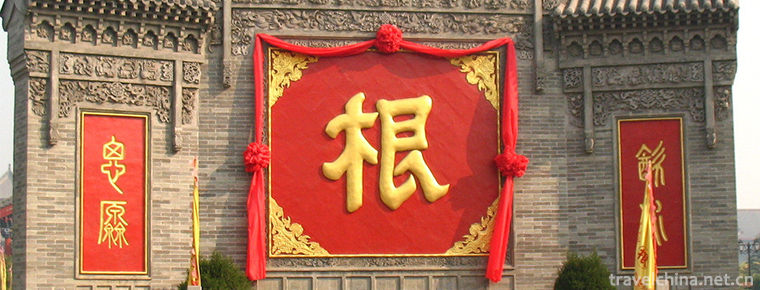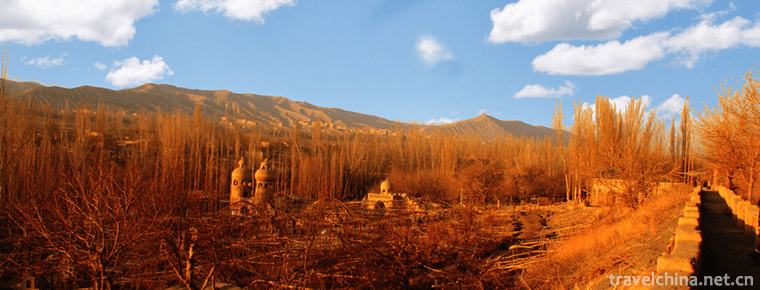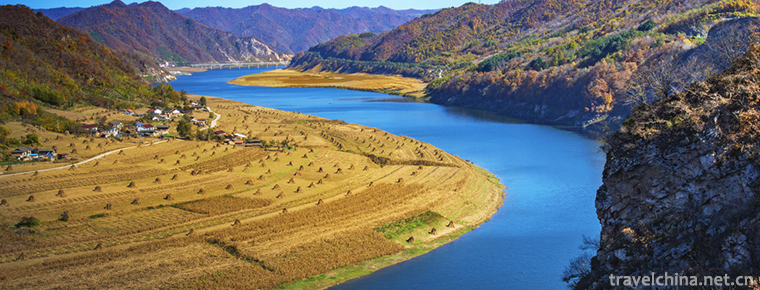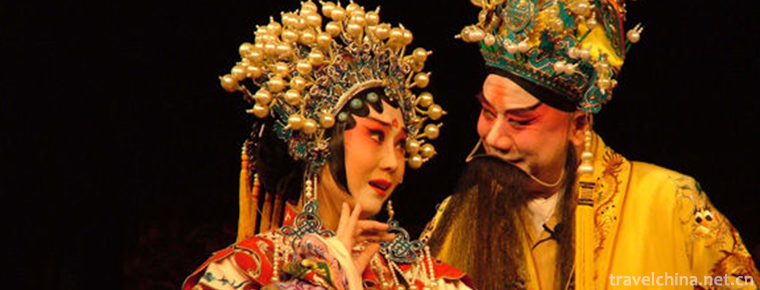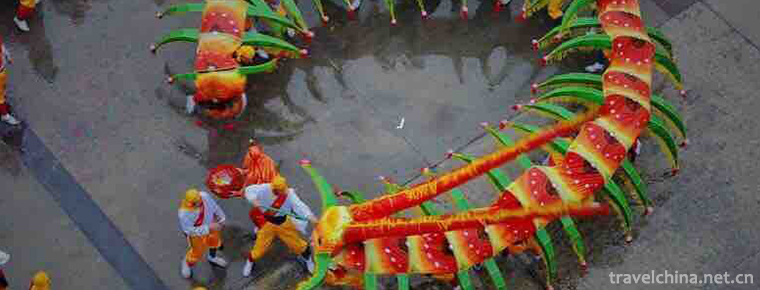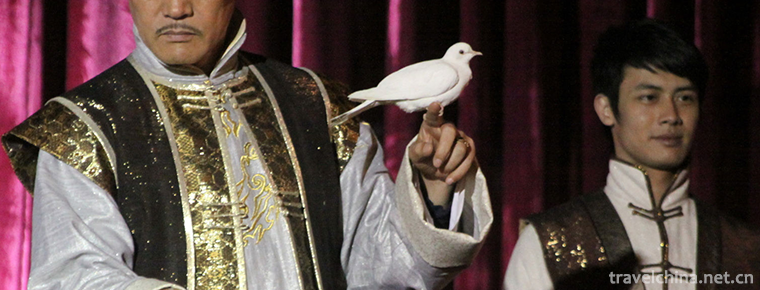Uygur Dawazi
Uygur Dawazi
Dawazi is an ancient traditional acrobatic performing art of the Uygur people. "Da" means "hanging" in Uyghur, and "Wazi" means someone who likes to do something. The word "Dawazi" refers to the Persian word "Dalbari", which means the high-altitude rope-walking performance. In ancient times, it was called "rope-walking", "plateau sacrifice", "rope-stepping" and so on.
In 2006, Dawazi was listed in the first national intangible cultural heritage list by the State Council.
Find by hard and thorough search
"Dawazi" has experienced several ups and downs, with its long history, unique style and characteristics, exquisite skills and thrilling performances spread to the present day. According to historical records, "Dawazi" originated in the Western Regions more than 2,000 years ago. It was introduced into the Central Plains in the Han Dynasty and prevailed in Uygur settlements in southern Xinjiang. Historically, many "Dawazi" families handed down art from generation to generation, some even went abroad, along the Silk Road, to India, the Red Sea coast, Egypt and other places to sell art.
Zhang Heng, a famous scientist and writer in the Eastern Han Dynasty (A.D. 78-139), was the first to record this skill. In his "Xijing Fu", Zhang Heng had "a square facing back and looking back, a wonderful play coming from a corner.... Speaking of the profligacy of jumping pill and sword, the words "go up and meet up", describe the scene of two artists meet up. Luoyang, the Dingdu of the Eastern Han Dynasty, called Chang'an as Xijing. In the Fu, Emperor Wudi of the Han Dynasty boasted of the country's prosperity and strength in the spring of the third year of Yuanfeng in the Western Han Dynasty (108 B.C.). He cared about optimistic banquets for Siyi guests, lofty houses, wine pools and meat forests. At the same time, he gathered folk artists of all nationalities to "go to the theatre at the corner and watch within three hundred miles". It can be seen that the rope has been walking since 108 B.C.
People's Movement
Since 1953, "Dawazi" has lasted four times as a performance item of traditional minority sports. Up to now, it has become an indispensable and important part of the "People's Movement". At the Fourth National Minority Sports Games held in Nanning in 1991, "Dawazi" won the first performance award established by the state. With its unique style, strong local characteristics and exquisite skills, Dawazi has won the laurel of performances in previous national games.
In order to carry forward the art of "Dawazi", the people's government of the autonomous region approved in 1990 that the Uygur "Dawazi" artists who had been circulating among the people for a long time should be adapted into a performance team of the Xinjiang Acrobatic Troupe. On June 22, 1997, Adili Wushor, the heir of Dawazi, successfully crossed the Three Gorges of the Yangtze River in 13 minutes and 48 seconds, breaking the Guinness World Record.
Folklore
There are some legends about the origin of Dawazi.
1. Legend 1:
The reason why this form of activity has come down to the world is from a legend. In ancient times, a demon appeared in a place where the Uygur people lived. It came and went in the air, calling for wind and rain, maiming the people, and the people of Li complained incessantly. At this time, there was a brave young man, who was brave in his deeds. He erected a 30-meter-high wooden pole on the flat ground, connected the ground with a rope about 60 meters long from the top of the pole, then stepped on it and went up to fight with the demon. Finally, he killed it and did great harm to the people. Since then, high-altitude rope walking has spread and developed into a form of entertainment for the Uygur people.
2. Legend 2:
Uygur old people often tell the story of the birth of "Dawazi". It is said that two thousand years ago, there was a big spring in Wushi County of Aksu area. Spring water irrigates farmland, grains and rice are fragrant; spring water enters pasture, cattle and horses are strong. But strangely, there is a big tree in the middle of the spring. Before the sun comes out, if you climb up the tree, you will find many prosperous cities, pavilions, pavilions, palaces, and the distinctive clothes of pedestrians on the distant mountains.
One day three wives suddenly came to see the spring and wanted to monopolize it. In order to drive out the crowd here, they use magic, while the wind blows, sand blows on people's faces, while the rain, destroying the good fields. The bad news spread to a place in the west. A young man named Ublishala arrived in Wushi County alone to find out the cause of the disaster.
Just as the people were complaining about their misery to Ublissala, thunder and lightning broke out again. Ubre Sarah looked up at the sky and found three grinning wives in the clouds. So he said to the crowd, "The evil spirits are in the clouds and catch them." "The sky and the earth are one hundred and eighty thousand miles apart. What can we do? People asked sadly. Ubli salad is very alert. He said, "We can tie a wooden pole with a rope and stick it in the clouds. "
For the first time, the wooden pole was not high enough; for the second time, it was still near; and for the third time, a wooden pole was finally erected straight into the clouds. A long rope pulled from the top of the pole is tied to the ground. Ublissala, holding a wooden pole, climbed up the rope step by step into the sky. A Star Wars began fiercely. Ublissala made progress or not, fell and got up. He was exhausted and went on fighting. After fighting wit and courage, he finally defeated the devil's wife.
The sky became clear, the earth grew new rice and grass, and Ubre Salad became a hero worshipped by everyone. Later, in order to thank the young man, people began to practice "Dawazi".
artistic characteristics
"Dawazi" performances are mostly held during festivals. The high-altitude rope walking performances are thrilling and have the dual characteristics of sports and acrobatics. Dawazi's performance venue is unique and interesting. It covers an area of 100 *60 meters. The main pole is 30 meters high in the middle. There are archways at the top. The coloured flags are waving in the wind. They are like castles in the air. They are particularly eye-catching. There are suspenders (swings) and rings at both ends of the crossbar of the archway for performers to use. The main rope 80 meters long is like a long snake head and tail connecting the ground and the archway, which is particularly spectacular. Dawaz shows the whole process of Dawaz through the combination of rope walking and hanging bars.
Dawazi performances are mostly performed in the open air, which is characterized by a variety of juggling techniques to be carried out on ropes or steel wires tens of meters high. Performers are more attractive when performing, young men and women "Dawazi" reach out extraordinary, the performers hold a balance pole about 6 meters long, without any safety belt, and perform a series of exciting skills such as walking around the rope, sitting cross-legged, blindfolded walking, walking under the foot on dishes, flying jumping and so on. With the accompaniment of Uygur folk music, high-altitude rope walkers dance and sing in rhythm, quickly replacing difficult skills, performing humor, the scene is lively and distinctive. The whole performance was breathtaking. Today's "Dawazi" performance shows the whole process of "Dawazi" through the combination skills of ground movement to high-altitude rope walking and aerial suspender. Through continuous practice and development, it has achieved great success.
Performing Skills
With the maturity of rope-walking art, great breakthroughs have been made in skills. For example, during the performance, the female artists step up along the grounded slant rope, climb on the horizontal rope and begin to perform skillfully. This traditional action is still retained in the Uygur "Dawazi" and other areas of China. Technically, in addition to the performance of the body, forward and backward, dance tumbling, but also created some more difficult movements: jumping up continuously by rebounding rope; jumping rope rapidly on the rope; two artists rope to sword fighting, sword fighting can also exchange positions, compared with the "two advocates of dance, shoulder-cutting do not lean" greatly.
Dawazi was first popular in Hetian, Shache, Yingjisha and Kashgar, then spread to Kuqa, Turpan, Hami, Yili and Urumqi. Today, the star performing Dawazi is Adili Wushor, the air Prince of the Xinjiang Acrobatic Troupe. He is the sixth generation of the Dawazi performing family, whose family has performed this skill for at least 400 years. Adili Wushor not only created innovative and difficult skills such as small-top inversion, splitting, riding a unicycle, bending down to pick lotus on high-altitude steel wire, but also renovated the Guinness record of high-altitude steel wire walking twice in 1997 and 2000 and became a beloved air warrior.
King of the High
brief introduction
Adili, the sixth generation of Dawazi art in Xinjiang, was born on July 1, 1971 in Yingjisha County, Kashgar, Xinjiang. From 1997 to 2003, he successfully broke the world record of high-altitude walking five times, successfully crossed the steel wire up to 1399.6 meters, set the Guinness world record of "the longest high-altitude steel wire walking without insurance" and set the record of "25 days of high-altitude survival".
The name Adili, which means "balance" in Uygur, can also be interpreted as "justice". As the sixth generation of "Dawazi" art in Xinjiang, Adili can successfully break the world record of high-altitude walking five times with a long wire rope, creating a surprising "balance". Therefore, people all kindly call him "King of the High".
Record
* On July 4, 1997, Adili, the heir of "Dawazi" in Xinjiang, did not bring any safety rope. He walked 600 meters across the Three Gorges of the Yangtze River in 13 minutes and 48 seconds, breaking the Guinness World Record for the first time. ?
* On October 6, 2000, Adili successfully crossed 1399.6 meters of steel wire between Furong Peak and Zhurong Peak in Hengshan Mountain of Nanyue without any safety rope, creating the world Guinness record of "the longest steel wire walking in the world without insurance at high altitude". "
* From April 16 to May 11, 2002, Adili set a record of "25 days at high altitude" on Jinhai Lake, Pinggu County, Beijing, which attracted the attention of the whole world and was praised as "the king of high altitude" in China.
* On July 2, 2010, Prince Adili ended the challenge of bird nest survival at high altitude, landed slowly on the ground with a smooth Weiya, declaring the success of the challenge. As a result, he also created the world Guinness record of high-altitude wire walking performance for 198 hours, 23 minutes and 60 days (April 25, 2010 - July 2, 2010).
Inheritance Significance
Dawazi performance is the crystallization of Xinjiang Uygur's diligent and brave wisdom, and also a bright pearl in the treasure house of Chinese culture. Historically, the Uygur "Dawazi" of our country has performed in Afghanistan, India, Egypt, Moscow and other places, playing an important role in cultural exchanges between our people and people of all countries. With the exchanges of cultural activities among different nationalities, Dawazi has constantly introduced some new contents, such as bowl top, bicycle riding, flower biting and so on, which have been moved from the ground to the rope to add to Dawazi's icing on the cake.
Protection
However, at present, the inheritance of Dawazi's skills is difficult. The performances of high difficulty, high danger and high standard require that the performers possess strong physical balance ability and good psychological quality. Therefore, even interested learners are often difficult to meet the established requirements of the project, which results in the difficult situation of Dawazi's inheritance. Coupled with the impact of modern entertainment activities, the performance market of Dawaz is shrinking. This ancient acrobatics art is increasingly in danger and needs to be protected in an organized and planned way.
The state attaches great importance to the protection of intangible cultural heritage. On May 20, 2006, the intangible cultural heritage was approved by the State Council and listed in the first batch of national intangible cultural heritage list. On June 5, 2007, the Ministry of Culture confirmed that Adili Wuxiu of Xinjiang Uygur Autonomous Region was the representative successor of this cultural heritage project, and was included in the list of 226 representative successors of the first batch of national intangible cultural heritage projects.

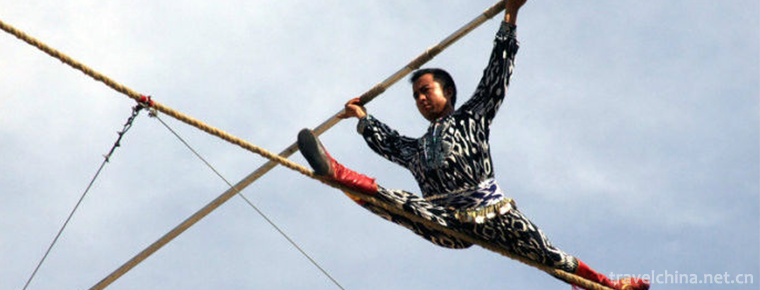
-
Hongtong Dahuaishu Ancestor Memorial Garden
Located in Hongdong County, Shanxi Province, Hongdong Dahuashu ancestor-seeking scenic spot is the only national sacrificial site with the theme of "root-seeking" and "ancestor-sacrific.
Views: 212 Time 2018-11-24 -
Putaogou Scenic Area Turpan City
The Putaogou Scenic Area in Turpan City is located in the Flame Mountain, 11 kilometers northeast of Turpan City, Xinjiang. It is about 8 kilometers long in the South and 2 kilometers wide in the East.
Views: 171 Time 2018-12-12 -
The Peninsula Shanghai
Shanghai Peninsula Hotel is located on the Bund, which has a long history. It is the only new building on the Bund in 60 years. It can enjoy the Grand View of the Bund, Huangpu River, Pudong .
Views: 253 Time 2018-12-16 -
Jingming Hot Spring Resort
Jingming Hot Spring Resort is the largest resort in China. It is located in Jingxi Garden Town, Jiexi County, Jieyang City, Guangdong Province. It is built by Shenzhen Anyuan Investment Group Co., Ltd.
Views: 337 Time 2018-12-22 -
Helan Mountain Rock Painting
Helan Mountain Rock Painting is a national key cultural relics protection unit, the national AAAA level tourist attractions, the national research tourism demonstration base (2016 one of the first 20).
Views: 97 Time 2019-01-13 -
Shui Dong gou
The Shuidonggou scenic spot in Ningxia is the earliest Paleolithic cultural site excavated in China. It is known as the birthplace of Chinese Prehistoric Archaeology.
Views: 144 Time 2019-02-08 -
Yalu River Scenic Spot
Yalu River Scenic Spot is located in Dandong City in the middle and lower reaches of Yalu River. It is 210 kilometers long from Hunjiang Estuary in the East and from Dadong Port in the west.
Views: 203 Time 2019-02-27 -
Kun Opera
Kunqu Opera, formerly known as "Kunshan Opera" or "Kunqu Opera" for short, is an ancient Chinese opera voice and opera, now also known as "Kunqu Opera". Kunqu Opera is on.
Views: 160 Time 2019-05-10 -
Centipede dance
Centipede dance, Guangdong traditional folk dance. Originated from Tongzhi in Qing Dynasty to Guangxu, it was initiated by Chen Chengjin, a native of Ximen, and Shi Wenyong, a good friend. It is a squ.
Views: 163 Time 2019-06-29 -
conjuring tricks
Conjuring tricks is one of the traditional Chinese acrobatics. Performers use agile methods to create audiovisual illusions, performing various objects, animals or water and fire and other rapid incre.
Views: 96 Time 2019-07-01 -
Chengdu University of Technology
Chengdu University of Technology was founded on March 15, 1956 and approved by the State Council. On March 27, the Ministry of Higher Education and the Ministry of Geology jointly issued a paper based.
Views: 129 Time 2019-08-31 -
Mineral resources in Suining
The mineral resources with more reserves in Suining City mainly include oil, natural gas, well salt, placer gold, limestone, etc., especially natural gas and brine resources. Suining has developed and utilized 7 kinds of mineral resources, including shale mine.
Views: 194 Time 2020-12-16
